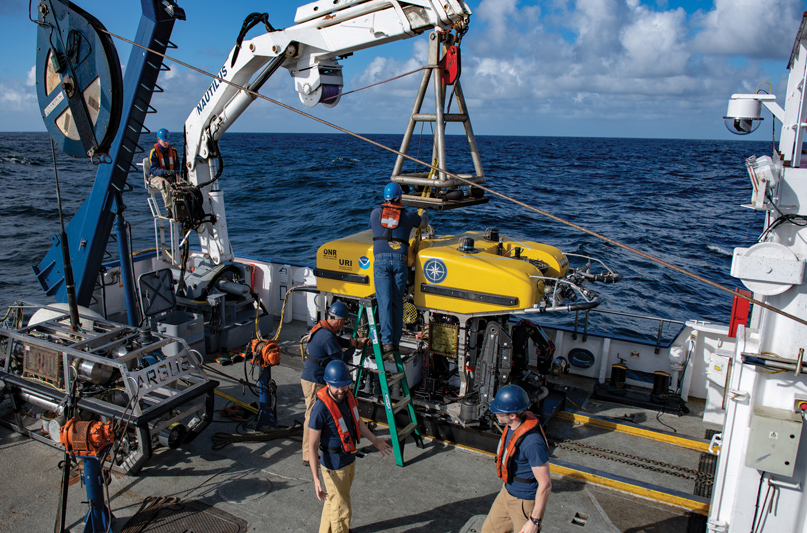
A Cosmic Discovery in Our Own Backyard
An out-of-this-world discovery occurred off the Washington coast that shook up the stargazing community. After an eight-hour seafloor search, two tiny fragments of molten rock were discovered – artifacts that scientists suspect are remnants of a meteor that exploded in a fireball crashing down into the sea in March.
Underwater robots from the research vessel E/V Nautilus scoped the ocean floor, filtering and scooping up sediment and raking the sand with a magnetic wand that detects magnetic meteorites. At 300’ deep on a soft and muddy seafloor, the crew of the E/V Nautilus explains the meteor fragments were most likely swallowed up on impact. That situation combined with 12’ surface swells made for a challenging task to say the least. These two fragments were found in the last sample of the day. Dr. Mark Fries, NASA’s curator of cosmic dust, describes the sea bottom as a “billiard table, and there was one little pit where it looked like something fell into it.”
According to Dr. Fries, this was the largest detected meteor in the U.S. in more than 20 years, and an estimated two tons of rock possibly survived the plunge. He tracked the main impact zone to a ½-mile diameter swatch just 16 miles from the Washington coast using weather radar. Maybe you felt the sonic boom this “golf cart-sized meteor” created, as described by the Seattle Times, when it hit Earth’s atmosphere on March 7. University of Washington astronomy professor Don Brownlee said if the meteor had exploded over Seattle, it probably would have shattered glass and caused injuries.

“I’m cautiously optimistic, not ready to be definitive about it but the first look at the samples, it looks like we got what we came for,” says Dr. Fries. But before anyone gets too excited, the 1/10”-wide fragments must be microscopically analyzed to ensure they came from outer space. If it’s true, this would be the very first time anyone has recovered meteor fragments from the ocean bottom. Dr. Fries continues, “As a scientist, I want to be unbiased, I want to be logical. At the same time, I’m looking at these things saying, ‘Yeah! This is awesome!'”
After the fragments have been examined, Dr. Fries will send them to the national meteorite collection in the Smithsonian Institution, and if the Meteoritical Society decides the specimens contain enough material to be classified as a meteorite, they’ll need a name. Dr. Fries and the Olympic Coast National Marine Sanctuary asked members of the Quinault Indian Nation (the closest community to the crash site) to suggest possibilities.